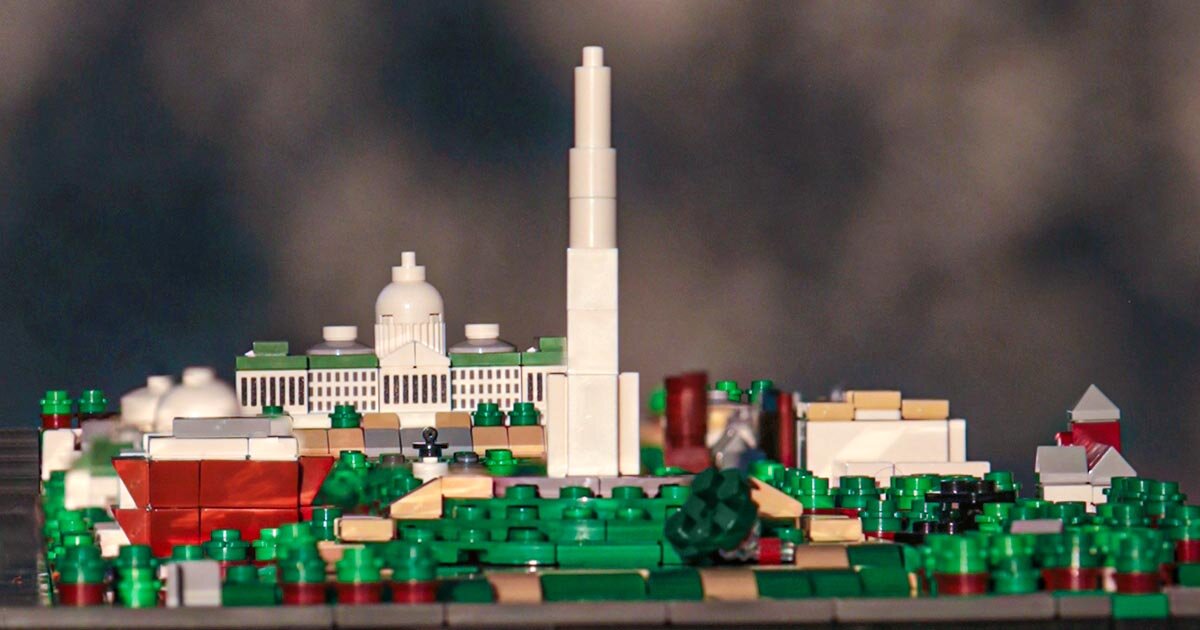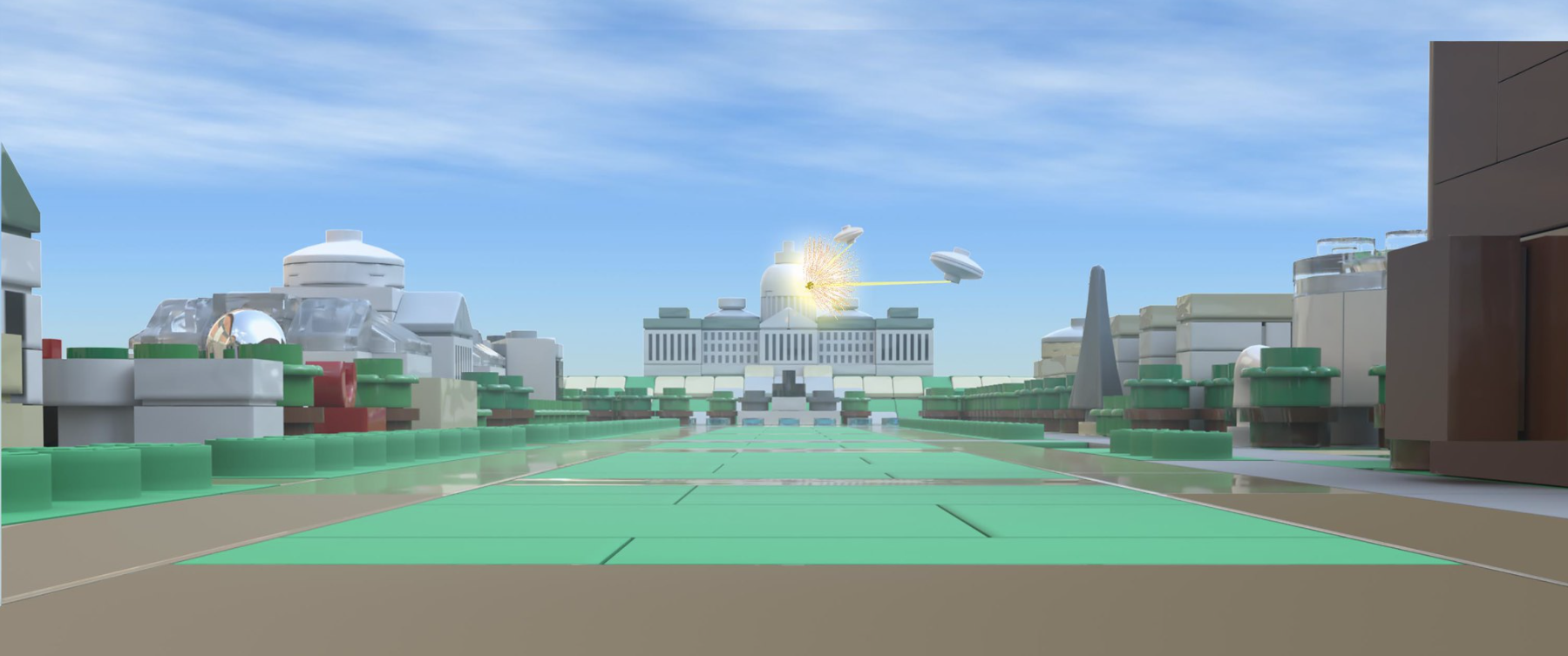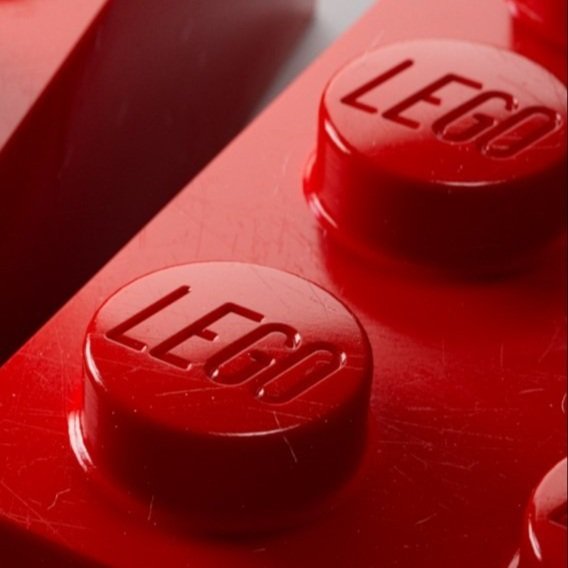Honey, I Shrunk the National Mall
/Best of BrickNerd - Article originally published August 23, 2021.
Wait, is that smaller than I remember??
We’ve featured Wayne Tyler’s updated and gigantic “micro” build of the United States National Mall (actually it was a second update from our original post in 2018). He has built like mad and expanded the already impressive layout greatly. But now there’s a new twist to his journey—building a micro version… of his micro build!
The New MOC in all its glory - And look, he labelled all the buildings!
We saw the build and knew we needed to get the inside scoop, so read on to find out more:
Doug: So how big is the new “small” version of the National Mall compared to your prior MOC, and were you able to cover the same subject material?
Wayne: The microscale version of the National Mall is about 16 feet long and uses a scale of about 1:300. The mini-microscale version is slightly less than 3 feet long and uses a scale of 1:3000. Both show the National Mall from the Capitol Building to the Washington Monument Grounds.
Comparing the two National Mall MOCs - Rick Moranis would be proud!
Doug: Wow, 3 feet long for a micro build is nothing to shake a stick at, but frankly I am still floored by the 16 feet length of your original build. So tell us more about the new build—how did it come about?
Wayne: In 2019, I took my “big” version of the National Mall to BrickFair Virginia. There I met fellow microscale builder John Klesh from ILUGNY. During our various conversations, I expressed uncertainty about my building abilities, being relatively new to building with LEGO. John suggested a challenge to increase my confidence, to sharpen my ability to pick the essential details of an architectural form and force me to see LEGO pieces in a new way.
John’s challenge was to take a MOC and recreate it as small as I possibly could while keeping it identifiable. Basically, take something that I knew really well and shrink it to the point where only the essence of the structure remained but it was still recognizable. He gave me until Christmas (which was four months away) to build two of them.
The only MOC I’d ever worked on was the National Mall, so I choose two of the buildings on the Mall I had already finished. The first pick was the National Museum of American History [NMAH] because it was the first building I designed and built for the microscale version of the Mall. It seemed relatively straightforward. The second was the I.M. Pei-designed National Gallery of Art, East Building [NGA-East] which, at that point, was the most difficult building I had designed and built.
By Christmas I had finished those two and had also completed a mini-microscale National Air and Space Museum [NASM].
An early draft of what would become the mini-micro LEGO National Mall.
I didn’t think anything more about it until I got an e-mail from the Bricks Cascade folks announcing their Bricknic in the middle of August. They suggested saving your big MOCs for their March 2022 LEGO event, but if you wanted to display something smaller, there would be table space available. Knowing that I couldn’t bring the 16-foot version of the Mall, I remembered the John Klesh Challenge pieces, I already had the start of a mini-microscale Mall. Following a furious 1 1/2 months of building, here we are.
Wayne with his wonderful new MOC!
Doug: It’s really great that another builder in the community provided the main fuel for this build, and it just needed the final spark of an in person event to light the fire! I’m sure though that like most other MOCs you may have had a great inspiration, but there are usually challenges along the way. Is that the case here as well?
Wayne: As a MOC gets smaller and smaller, the pool of pieces you can use while still retaining some sense of the correct scale becomes extremely small. The height of one brick becomes the height of the entire building, so you start looking at plates and tiles to get some of the detail you want. You start experimenting with methods using the thinnest and shortest pieces available.
I found that minifig accessories (an area I’ve never really investigated) turned up some real gems, like parts #28974 Neck Bracket with Back Stud - Thick Back Wall and #42446 Neck Bracket with Back Stud - Thin Back Wall. For the top of the Washington Monument, part #37762 Candle. Part #6246d Toolbox Wrench for the Native American Veterans Memorial.
With things like trees and statues, I had to go more abstract, trying to evoke the feeling of the actual object rather than literally recreating it. I tried part #90398 Statuette / Trophy but it was gigantic in the scale I was using. So with the statues such as the John Paul Jones Memorial, Peace Monument and James A. Garfield Memorial, all I could do was use part #20482 Round 1x1 with Bar and Pin Holder and try to get a color that was close to the actual statue.
Finally, and I realized this pretty late in the build, you go with printed pieces to get more detail. The Capitol uses part #3004pb185 from the San Francisco Skyline set [#21043] for windows and part #3004p06 (which was last produced in 1992) for columns. The National Museum of Natural History, National Gallery of Art, West building and Department of Agriculture build use part #3024pb010 (also from the San Francisco Skyline set) for windows and doors.
Another aspect that I found difficult, and I brought this on myself, was adding elevation to the terrain. I wanted this mini-microscale MOC to be as true as possible to the larger microscale version of the Mall I’m still building. The larger Mall version accurately (within the scale of LEGO pieces) depicts the terrain elevation from the Capitol Building through the Washington Monument Grounds.
However, it’s a lot harder to make terrain look somewhat realistic when part #11477 1x2 curved slope changes the elevation with an incline close to what a set of stairs has. It makes the terrain look...chunky...is the way I describe it. So, for some of the roads and walkways, I used 1 x 6 tiles over the same elevation change. That provided a more natural and realistic-looking incline. Where the terrain elevation really falls apart is on the sidewalks leading up to the Washington Monument.
Doug: I’ll have to respectfully disagree that your elevation work ever “falls apart” but I certainly understand the challenge you faced trying to work smaller and smaller with the same palette, and it’s great to hear how you discovered new parts and techniques to accomplish the design tasks at hand. In your Flickr posts, you mentioned that eventually you focused on form versus being stuck on a precise and consistently used scale across the MOC. Can you talk a little more about that for our readers?
Wayne: When I decided to build the whole Mall using the same approach as the John Klesh Challenge I thought everything would need to be in the same scale relative to each other. The three buildings already created fulfilled the challenge, but the scale of each was noticeably different when placed side-by-side.
I redesigned the American History and the Air & Space Museums to match the scale of the National Gallery of Art, East Building and then started working on the rest of the mini-microscale Mall. But I kept coming back to the NMAH. Yes, it had the proper scale, but it wasn’t instantly recognizable. Over the course of building the rest of the MOC I probably redesigned the NMAH four times, but still wasn’t getting that identifiable look. All the versions came across as variants of a generic white box.
Then, very late in the project, I decided to try and find a piece or pieces that really nailed the look, but I kept trying to keep the scale correct. It wasn’t until I put two part #4216 modified 1x2 brick with groove next to each other that I got the look that just screamed American History Museum. Though height of a brick was far out of the scale I was trying to maintain, I built a fifth version of the NMAH with the grooved brick and the look was just spot on. And when placed by the other buildings in the mini-microscale Mall, it didn’t look out of place.
I learned I was willing to suspend my disbelief at the scale being wrong if the building strongly resembled the actual museum. This prompted a reassessment of everything else I had already created and I wound up making changes to the Air & Space Museum, the Department of Agriculture and the African-American Museum.
Doug: I completely agree with your conclusion. I feel that over the last few years when I try to be a slave to exact proportions it causes more trouble than it’s worth. If the build looks “right” then it is right! So one thing I remember from our prior chat was that transportation of the large National Mall MOC was a logistical pain in the butt, how happy are you to transport this little guy instead?
Wayne: [BIG GRIN] I love the little guy. It all fits in a plastic storage box that’s smaller than most of luggage I own and there’s room to spare. Stash it in the corner of the trunk of a car and you’re ready to go. Packing the big version in the van is a one to two hour ordeal. The small one is so easy to transport, setup and tear down, it’ll become part of the display of the big version.
Doug: Alright before we let you go, I thought it would be interesting for our readers to hear a little about Bricknic from your perspective because it was the impetus for your build and it was one of the first in-person convention-like events (after BrickFair Virginia and I’m sure a few others) since the pandemic began. So it’s a big deal, even if this was meant to be a smaller more entry-level get-together to ease back into the swing of things.
If any of our readers didn’t see it yet, BrickNerd also just published a guest article written by James Ritzman - one of the organizers of the event. You can learn about it in much more detail there. So Wayne, what are your overall thoughts?
Wayne: Bricknic was both great and just okay. It WAS wonderful to catch up with friends and acquaintances after such a long hiatus. The number of folks who turned out was quite good. 197 people signed up online and I would say a good chunk of them did attend. The venue lent itself to safe mingling and provided a protected area for AFOL displays. Besides the swag bag, there were bulk part bags being given to registrants.
On the other hand, it was the last day of a heat dome over the Northwest US, so it was HOT. Also, folks who attended didn’t need to bring anything to display (though there was ample table space) but it was recommended that if you DID bring a display, it should be small. I would say only half the table space (or less) actually had MOCs. There was less variety than I had hoped for.
In my opinion, it was a brilliant idea, it was well run, and it WAS great to be able to reconnect with other AFOLs. Would I attend another? Definitely, if the opportunity shows up again. But was it anything like a regular LEGO event...not even close, but then again, that wasn’t the point of having the Bricknic.
The Bricknic pavilion!
Doug: That makes total sense Wayne—there were bound to be some core large-con elements missing, which I can see being a bummer. But I totally agree from all those I spoke with about it, the event was a success and was really exciting and fun mainly because we AFOLs miss mingling with one another! Plus the Bricks Cascade folks are a great crew and do good work.
For just a little more of an AFOL (non organizer) perspective, I managed to acquire a few more pictures from another pal, Caleb Inman, who attended the event and was kind enough to share. He and some friends especially enjoyed the games as well as the food offerings, apparently that was a big highlight of the event! Here’s what he captured:






There you have it, that’s the story of the shrunk down National Mall, and how it was inspired by the wonderful Bricknic event put on by the Bricks Cascade team. Thanks to Wayne for speaking with us and sharing his work once more!
You know what falls apart? The Capitol when it’s blasted by space aliens! Thanks, Bart for convincing Wayne to do this. :)
Have you ever created a micro version of one of your own MOCs? Personally, I think I’ve only done it once! Here’s Johnny 5 full size, and the micro version. Let us know in the chat if you’ve had that fun experience yourself!
Do you want to help BrickNerd continue publishing articles like this one? Become a top patron like Charlie Stephens, Marc & Liz Puleo, Paige Mueller, Rob Klingberg from Brickstuff, John & Joshua Hanlon from Beyond the Brick, Megan Lum, Andy Price, John A., Lukas Kurth from StoneWars, Wayne Tyler, LeAnna Taylor, Monica Innis, and Dan Church to show your support, get early access, exclusive swag and more.




































